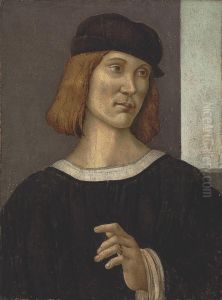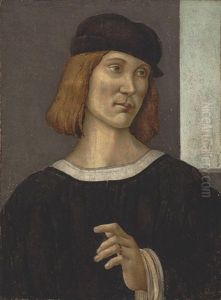Bartolommeo Genga Paintings
Bartolommeo Genga was an Italian painter and architect, born in 1516 in Cesena, a city in the Emilia-Romagna region of Italy. He was part of the Genga family, a lineage that included several artists, the most prominent being his uncle, Girolamo Genga, who was also his mentor. Girolamo was a prominent painter and architect in his own right, and under his guidance, Bartolommeo developed his artistic skills.
Bartolommeo's career unfolded during the height of the Italian Renaissance, a period characterized by the revival of classical art and learning, with a focus on humanism and the pursuit of individual excellence. His work was influenced by the prevailing styles of the time, which included the works of Raphael and Michelangelo.
Despite the potential for a flourishing career, Bartolommeo Genga's life and work are not well-documented, and as a result, less is known about his contributions compared to other artists of the period. He is known to have worked on a number of architectural projects, following in the footsteps of his uncle. His contributions to painting are also noted, although specific works attributed to him are rare, and his artistic legacy is largely overshadowed by other Renaissance masters.
Tragically, Bartolommeo's life was cut short when he died in 1558 at the age of 42. The cause of his death is not well-recorded, but his passing marked the end of a brief but potentially significant artistic career. Despite the scarcity of surviving works and the limited information about his life, Bartolommeo Genga remains a part of the rich tapestry of the Italian Renaissance, his story interwoven with that of his more famous uncle and the broader cultural movements of his time.

